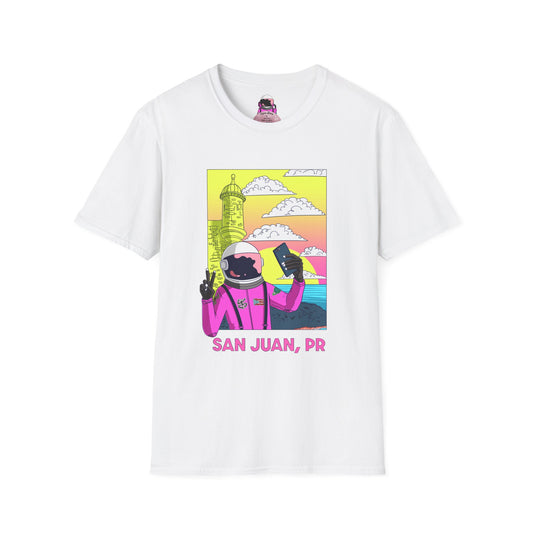Arecibo, es un municipio vibrante en la costa norte de Puerto Rico, con una rica historia entrelazada con avances científicos y un vibrante tapiz cultural.
Una mirada al pasado:
Raíces indígenas:
- Habitantes precolombinos: Antes de la llegada de los españoles, la región de Arecibo estaba habitada por los taínos, una cultura indígena de habla arahuaca. Eran hábiles agricultores, pescadores y artesanos que vivían en armonía con el entorno natural.
- Cacique Xamaica Arasibo: La región estaba bajo el liderazgo del cacique Xamaica Arasibo, cuyo nombre se cree que es el origen del nombre del pueblo.
Época colonial española:
- Asentamiento temprano: Los españoles llegaron en el siglo XVI y establecieron Arecibo como un puerto y centro agrícola importante. Su ubicación estratégica en la costa norte facilitó el comercio con otras partes de la isla y más allá.
- Crecimiento y desarrollo: Arecibo experimentó un crecimiento significativo durante el período colonial español. Se convirtió en un centro de producción de azúcar, con numerosos ingenios y plantaciones azucareras esparcidos por el paisaje.
- Legado arquitectónico: El pasado colonial de la ciudad se refleja en su arquitectura. Varios edificios históricos, entre ellos la Catedral de San Felipe Apóstol, muestran los estilos arquitectónicos de la época.
Siglos XIX y XX:
- Diversificación económica: Aunque la agricultura siguió siendo importante, Arecibo diversificó su economía en los siglos XIX y XX.
- Crecimiento industrial: La ciudad vio el surgimiento de nuevas industrias, incluida la producción y fabricación de ron.
- Desarrollos sociales y políticos: Arecibo jugó un papel importante en los movimientos sociales y políticos de Puerto Rico.
Arecibo: un centro de ciencia e innovación
- El Observatorio de Arecibo:
- Un hito científico: El Observatorio de Arecibo, un radiotelescopio colosal enclavado en un sumidero natural, fue un hito científico mundial. Su enorme antena de 305 metros (1000 pies), uno de los telescopios monoplato más grandes jamás construidos, lo convirtió en una poderosa herramienta para la investigación astronómica.
- Descubrimientos clave:
- Astronomía de pulsares: El observatorio desempeñó un papel fundamental en el descubrimiento y estudio de los pulsares, estrellas de neutrones que giran rápidamente y emiten rayos de radiación electromagnética. Esta investigación condujo a conocimientos revolucionarios sobre la física de la gravedad extrema y la estructura del universo.
- Planetas extrasolares: Arecibo contribuyó a la detección de los primeros exoplanetas, planetas que orbitan estrellas distintas de nuestro Sol. Este descubrimiento revolucionó nuestra comprensión de los sistemas planetarios más allá de nuestro propio sistema solar.
- Astronomía de radar: El observatorio utilizó tecnología de radar para estudiar asteroides, cometas y otros objetos celestes, proporcionando datos cruciales para la defensa planetaria y la comprensión de la composición de estos cuerpos.
- Investigación ionosférica: Como sugiere su nombre, el observatorio también realizó investigaciones importantes sobre la ionosfera de la Tierra, la capa cargada eléctricamente de la atmósfera.
- Un Centro de Excelencia Científica: El Observatorio de Arecibo atrajo a científicos de renombre de todo el mundo, fomentando una comunidad vibrante de investigadores y contribuyendo al desarrollo de nuevas tecnologías y metodologías científicas.
El Observatorio de Arecibo, aunque trágicamente fue desmantelado en 2020, dejó una marca indeleble en el mundo científico. Sus contribuciones a la astronomía, la ciencia planetaria y nuestra comprensión del universo continúan inspirando y dando forma a la exploración científica.
Un tapiz cultural:
- Festivales vibrantes: Arecibo vibra con el ritmo de numerosos festivales durante todo el año, mostrando el espíritu vibrante de la cultura puertorriqueña.
- Fiestas Patronales de San Felipe Apóstol: Las fiestas patronales de la ciudad, que se celebran en mayo, son un evento importante que incluye procesiones religiosas, música animada y deliciosa comida.
- Festival del Ceti: Este festival rinde homenaje a la herencia pesquera de la ciudad, con carreras de barcos, fiestas de mariscos y actuaciones culturales.
- Carnaval del Capitán Correa: Una celebración colorida con desfiles, música y baile, que da vida a la ciudad con disfraces vibrantes y energía festiva.
- Gastronomía: Arecibo es una delicia culinaria, ofreciendo una muestra de la auténtica cocina puertorriqueña.
- Especialidades locales: Deléitese con los platos locales favoritos como el mofongo (puré de plátanos con ajo y cerdo), arroz con gandules, lechón (cerdo asado) y mariscos frescos.
- Comida callejera: Explore la vibrante escena de comida callejera, saboreando deliciosas delicias como empanadas, tostones y refrescantes jugos de frutas.
- Música y arte:
- Patrimonio musical: Arecibo tiene una rica tradición musical, con artistas locales que contribuyen a los sonidos vibrantes de la música puertorriqueña, incluida la salsa, la bomba y la plena.
- Artes y cultura: La ciudad cuenta con una próspera escena artística, con galerías, centros de arte y espacios culturales que muestran las obras de artistas y artesanos locales.
- Locales de música en vivo: Disfrute de actuaciones de música en vivo en bares y restaurantes locales, experimentando de primera mano los vibrantes sonidos de la música puertorriqueña.
Arecibo hoy:
Hoy en día, Arecibo continúa evolucionando, combinando su herencia histórica con el desarrollo moderno. Sigue siendo un destino turístico popular que atrae a visitantes que vienen a explorar sus sitios históricos, maravillarse con la belleza natural del paisaje circundante y experimentar la vibrante cultura de Puerto Rico.
Juegos Mundiales de Surf ISA 2024:
- Esta competencia internacional se llevó a cabo en Arecibo por primera vez del 23 de febrero al 3 de marzo de 2024.
- Fue un evento importante ya que sirvió como evento clasificatorio final para los Juegos Olímpicos de París 2024.























